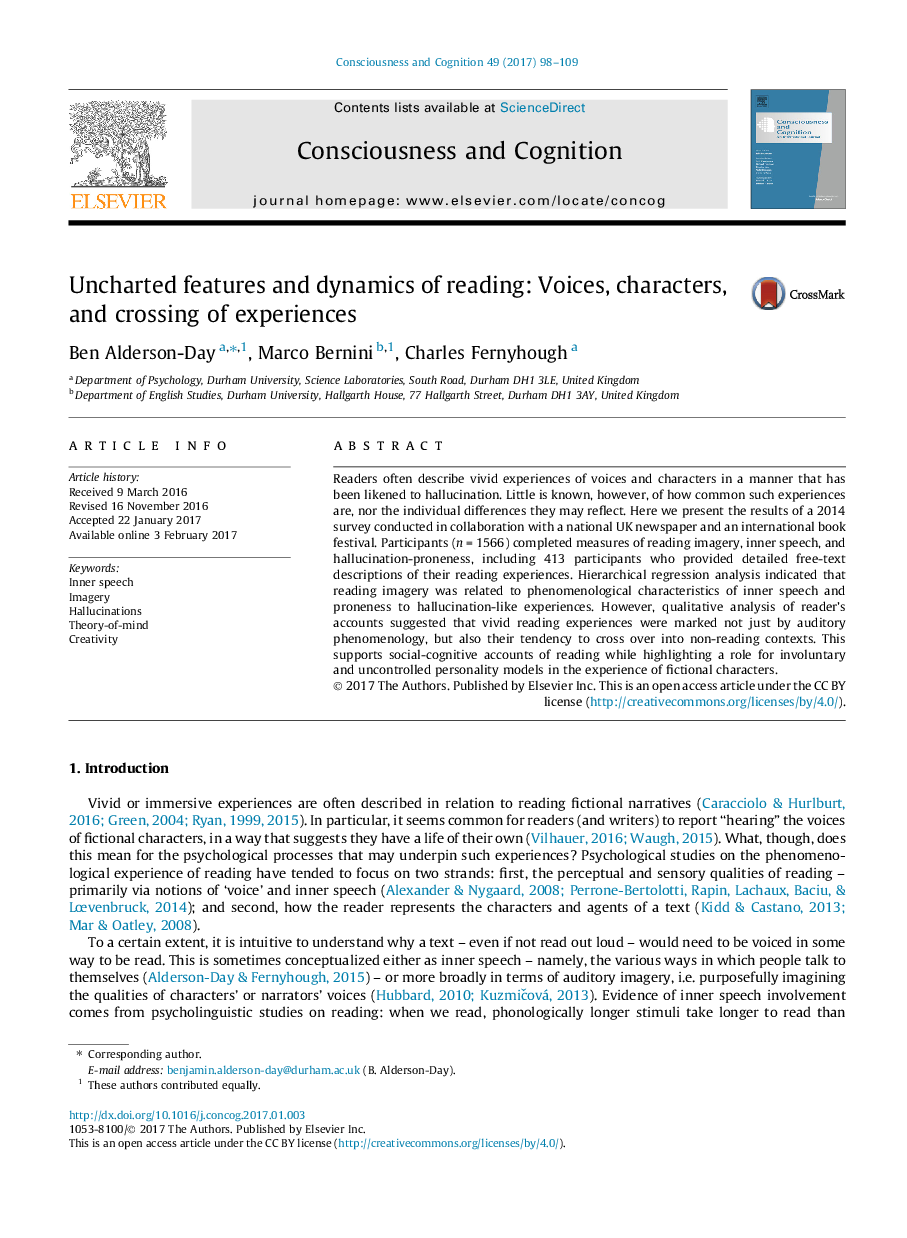| Article ID | Journal | Published Year | Pages | File Type |
|---|---|---|---|---|
| 5041862 | Consciousness and Cognition | 2017 | 12 Pages |
â¢Vivid experiences of characters implicate simulation processes during reading.â¢Reading imagery is related to features of inner speech and hallucination-proneness.â¢Qualitative analysis highlights involuntary experiences of characters and voices.
Readers often describe vivid experiences of voices and characters in a manner that has been likened to hallucination. Little is known, however, of how common such experiences are, nor the individual differences they may reflect. Here we present the results of a 2014 survey conducted in collaboration with a national UK newspaper and an international book festival. Participants (n = 1566) completed measures of reading imagery, inner speech, and hallucination-proneness, including 413 participants who provided detailed free-text descriptions of their reading experiences. Hierarchical regression analysis indicated that reading imagery was related to phenomenological characteristics of inner speech and proneness to hallucination-like experiences. However, qualitative analysis of reader's accounts suggested that vivid reading experiences were marked not just by auditory phenomenology, but also their tendency to cross over into non-reading contexts. This supports social-cognitive accounts of reading while highlighting a role for involuntary and uncontrolled personality models in the experience of fictional characters.
